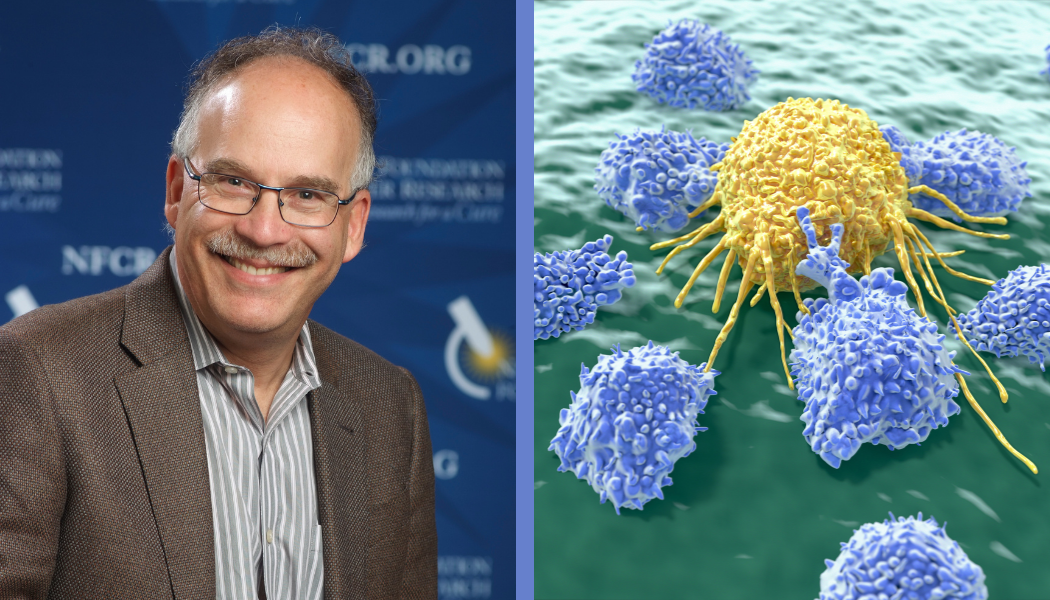Catching Cancer Cells on Their Way to Spreading
NEW NFCR-Supported Technology is Ready for Clinical Use
With a better understanding of the genetic changes in cancer cells, and a more effective way to capture them, oncologists and scientists can be alerted to drug resistance and metastasis —allowing them to more quickly select new drugs or better therapies for their patients.
The genetic changes and metastatic traveling of cancer cells (cancer spread) are a major challenge of cancer treatment. When genetic changes happen, the drugs that worked well at the beginning of treatment lose their killing power quickly (drug resistance). This often leads to uncontrollable cancer growth—and if patients are not quickly switched to better therapies, they may lose their battles with cancer.
Doctors and researchers know that the crucial information that they need to combat metastasis is carried by the circulating tumor cells (CTCs)—the cancer cells that travel in the blood. However, they don’t have effective ways to identify and capture the CTCs from the blood. What makes it so difficult is the ratio between normal blood cells and the CTCs: for every 1 billion normal blood cells, there are only a few cancer cells, which are mixed together and flow throughout the blood. It’s almost impossible to quickly spot the CTCs and take them out of the blood stream without a special technology.
Thankfully, with decades of research supported by NFCR and others at Massachusetts General Hospital, Harvard Medical School, Dr. Daniel Haber and his team has developed the novel technology platform TellDx, that can identify and capture those very rare CTCs.
The key component of TellDx is called CTC-iChip, which is built upon the cutting-edge Microfluidic technology. When blood samples drawn from patients are loaded on it, the CTC-iChip will divide the whole blood into separate parts by Hydrodynamic Cell Sorting process. The cells are then pushed through the CTC-iChip one-by-one in a single line. This Inertial Focusing technology exposes the cancer cells, leaving them nowhere to hide
Magnetophoresis is the last step of the CTC-iChip technology, where the CTCs are identified and taken out of the chip automatically, ready for analysis. This “Divide and Identify” technology allows doctors and scientists to quickly isolate the rare CTCs from large amount of blood samples and extract the critical genetic and metastatic information out of the cancer cells.
With research studies already demonstrating its clinical benefit to patients, the technology has now been deployed to multiple clinical research laboratories around the world. Upon obtaining required regulatory approvals, it could be used by doctors at hospitals to obtain the information they need to timely modify the treatment plans for patients who face the serious threat of drug resistance.
The success of TellDx platform and CTC-iChip is a recent fruit, among many others, of translational research funded by NFCR with dedication and tenacity. With your support, we can continue to fund more projects like this, and together, fulfill our shared mission of “Research for a Cure”. Make your generous gift here.
Additional Reads You May Enjoy:
Understanding Drug Resistance in Cancer
Stay Strong, Be Positive: Brianne’s Story
Stay connected with us! Receive our monthly e-newsletter and blogs featuring stories of inspiration, support resources, cancer prevention tips and more. Sign up here.
Reference:
The CTC-chip: an exciting new tool to detect circulating tumor cells in lung cancer patients; J. Thorac Oncol. 2009 Mar; 4(3):281-3. https://pubmed.ncbi.nlm.nih.gov/19247082/.












